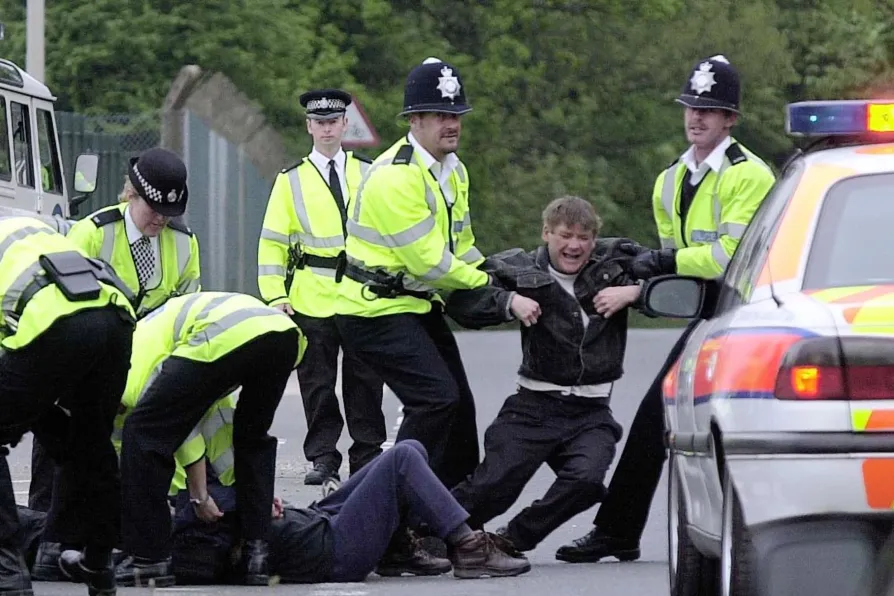NICK TROY lauds the young staff at a hotel chain and cinema giant who are ready to take on the bosses for their rights
60 years since the first CND Aldermaston to London march
Mass movements to avert apocalypse are back in the shape of climate change marches — and their origins can be traced to 1959, writes KEITH FLETT

 A protester is dragged away from the gates of Aldermaston, 2001
A protester is dragged away from the gates of Aldermaston, 2001
EASTER 2019 is as late as the annual festival can be. It is more usually in late March or early April. That reminds us that it is 60 years since the first Aldermaston to London march organised by the Campaign for Nuclear Disarmament (CND) which took place from March 27-30, 1959.
There had been a march at Easter 1958 supported by the new CND but organised by local direct action groups. It had gone from London to the Atomic Weapons Establishment at Aldermaston. The demand in 1959 however remained the same: ban the bomb.
The route from Aldermaston through Berkshire and west London to central London was 54 miles. By the third march in 1960 many thousands were involved in marching, but 1959 still had significant numbers.
Similar stories

Ben Cowles speaks with IAN ‘TREE’ ROBINSON and ANDY DAVIES, two of the string pullers behind the Manchester Punk Festival, ahead of its 10th year show later this month

JAN WOOLF wallows in the historical mulch of post WW2 West Germany, and the resistant, challenging sense made of it by Anselm Kiefer

CAROLINE FOWLER explains how the slave trade helped establish the ‘golden age’ of Dutch painting and where to find its hidden traces

The Morning Star sorts the good eggs from the rotten scoundrels of the year










